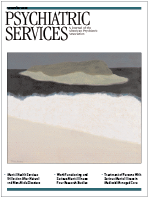The Biopsychosocial Approach: Past, Present, and Future
The basic tenet of the biopsychosocial model—that health outcomes affect and are affected by biological, psychological, and social factors—is understandable and even intuitive for many in the health care field. In fact, the biopsychosocial model makes for good "common sense" and thus could easily be disregarded as simplistic. However, the intricacies of the biopsychosocial approach are belied by the model's accessibility. The biopsychosocial clinician's task is no easy one—he or she must assess the interrelationships of multiple systems as they constantly affect and are affected by presenting—as well as nonpresenting—medical problems and must use skill and finesse in working with the patient to choose appropriate interventions, knowing that all systems will then be further affected. The Biopsychosocial Approach: Past, Present, and Future is a comprehensive work that explicates the complexities and richness of the biopsychosocial model and its implications in clinical practice, education, and administration.
The book is organized into six parts. The introduction presents the basic components of the biopsychosocial model, which was developed by George Engel, M.D., as an application of systems theory to medical practice. Part 1 discusses clinical applications, emphasizing the importance of a communicative, empowering relationship between the physician and the patient. Part 2 examines research in psychoneuroimmunology, relationship-centered health care, and the patient-centered clinical method. Part 3 considers educational and administrative issues. Of note, the University of Rochester's "Double Helix" curriculum for medical students is presented here. Another fascinating chapter explains how the biopsychosocial model can be applied to organizational management in a health care setting, increasing employee satisfaction and, consequently, patient care. Part 4 discusses the development of the biopsychosocial model and includes an ethnographic study of Engel's correspondence. Finally, the editors conclude by considering the future of the biopsychosocial approach.
This text will benefit professionals in a variety of health service disciplines. Most chapters are relatively free of medical jargon, although having a background in health services would certainly make for easier reading. In particular, readers without a medical background may find the chapter on psychoneuroimmunology less than accessible.
Some patients may find the book helpful. As one of the contributing authors suggests, "The patient must understand her illness at a level of technical sophistication concordant with her needs." The same could be said for understanding the treatment model. In addition, understanding the approach will help patients become empowered in their own care, which is integral to the biopsychosocial model.
For community psychiatrists, this text is virtually "required reading." The problems that our patients face are compounded by breakdowns across so many systems—biological, family, housing, and employment—and the distrust that many patients have for mental health practitioners is so overwhelming that effective treatment practically mandates a biopsychosocial approach.
In short, The Biopsychosocial Approach is informative, clearly written, and inclusive. However, one of its most important attributes may be that it is thought provoking. By explaining the origins and implications of the biopsychosocial approach, the authors force us to critically examine the origins and implications of our own beliefs about medicine. This self-examination can help us identify areas for growth in our own practices.
Dr. Bradford is a Robert Wood Johnson clinical scholar at the University of North Carolina School of Medicine in Chapel Hill and a clinical instructor in the department of psychiatry at the university.



